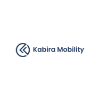Basics of FEA - Explicit and Implicit FEA
RELATED RECENT PLACEMENTS
Anupama Yeragudipati
Kabira Mobility
Gurunanak Khalsa College


Arun Kumar
Riverstone
Anna University

Paul Willington
DGS Technical Services Pvt. Ltd.
SAVEETHA SCHOOL OF ENGINEERING ,CHENNAI

IVIN TROY
Kabira Mobility
College of Engineering and Management,Punnapra

Karuthapandi K
DGS Technical Services Pvt. Ltd.
S. Veerasamy Chettiar college of engineering and technology

Gowsikraj M
Hyundai Motor India Ltd
Sri krishna college of technology


Mujahidoddin Saudagar
Hyundai Motor India Ltd
G.H Raisoni college of engineering and management Amravati


Krutika Ravikumar
Genpact
R.V.College of Engineering
Syllabus
This course is full of best-in-class content by leading faculty and industry experts in the form of videos and projects
Course Overview
- The objective of this course is to provide high-level concept-based instruction on FEA.
- The fundamentals of FEA are covered in this course.
- This course will provide you with extensive hands-on experience with ANSYS Workbench.
- This module will also provide you with Explicit and Implicit analysis of different case studies.
- This course specifically focuses on the strengthening of mathematical aspects of element formulations, material modelling and analytical aspects of explicit and implicit analysis.
- You will gain confidence in facing interviews in the automotive industry as a result of this course.
Course Syllabus
On a daily basis we talk to companies in the likes of Tata Elxsi and Mahindra to fine tune our curriculum.
Week 01 - Introduction to FEA
- What is FEA? and Why FEA?
- Advantages and industrial applications of FEA
- Different types of FEA analysis
- Pre-requisites of FEA
- Basics of Approximate and Exact solution methods
Week 02 - Methods of FEA
- Weighted residual techniques
- Basics of Petrov-Galerkian
- Potential energy approaches
Week 03 - Basics of FEA
- Meshing/Discretization
- Types of Elements in FEA
- Terminologies like Nodes, Elements etc.
- Introduction to Stiffness matrix, Plane stress and Plane strain conditions
Week 04 - 1D Element (Bar element)
- Stiffness Matrix of 1D element
- Nodal Displacements
- Nodal DOF
- Stress and Strain Calculations
- Shape functions
- Homogenization of Problems
- Case study Problem
Week 05 - 2D Element
- Stiffness Matrix of 2D element
- Nodal Displacements
- Nodal DOF
- Stress and Strain Calculations
- Shape functions
- Stiffness matrix of CST elements
Week 06 - 3D Element and FEA characteristics
- Stiffness Matrix of higher order 1D element
- Stiffness Matrix of LST element
- Stiffness Matrix of 3D element
- Nodal Displacements
- Different non-linearities in FEA
- Basic types of material models
- Factors influencing Solution of FEA
Week 07 - Basics of ANSYS
- Introduction to ANSYS
- Material Models
- Meshing techniques
- Solving Simple Static Problems
Week 08 - Equations of Motion
- Study of Basic Equations of Motions
- Mass Matrix, Stiffness Matrix
- Time dependance of Analysis
- Physics of Crash
- Study of Mathematics related to Crash
Week 09 - Explicit and Implicit FEA
- What are Explicit and Implicit analysis
- Basic Applications
- Advantages and Disadvantages of methods
- Difference between Explicit and Implicit methods
- Time steps, Hourglassing and Contacts used
- Mathematical approaches used by Explicit and Implicit analysis
- Case Studies:
- Hydroforming of Automotive Structures
- Modelling of Shape memory alloys
Week 10 - ANSYS
- Case Studies:
- Crush Analysis of square/rectangular tube using ANSYS
- Impact of ball/bullet on Steel thin plate
Our courses have been designed by industry experts to help students achieve their dream careers
Industry Projects
Our projects are designed by experts in the industry to reflect industry standards. By working through our projects, Learners will gain a practical understanding of what they will take on at a larger-scale in the industry. In total, there are 3 Projects that are available in this program.
Study of cantilever beam
Study of crushing of square steel tube
Study of impact of steel ball on aluminum plate of 5 mm thickness
Our courses have been designed by industry experts to help students achieve their dream careers
Ratings & Reviews by Learners
Skill-Lync has received honest feedback from our learners around the globe.

Flexible Pricing
Talk to our career counsellors to get flexible payment options.
INR 40,000
Inclusive of all charges
Become job ready with our comprehensive industry focused curriculum for freshers & early career professionals
1 Year Accessto Skill-Lync’s Learning Management System (LMS)
Personalized Pageto showcase Projects & Certifications
Live Individual & Group Sessionsto resolve queries, Discuss Progress and Study Plans.
Personalized & Hands-OnSupport over Mail, Telephone for Query Resolution & Overall Learner Progress.
Job-Oriented Industry Relevant Curriculumavailable at your fingertips curated by Global Industry Experts along with Live Sessions.
Instructors profiles
Our courses are designed by leading academicians and experienced industry professionals.

1 industry expert
Our instructors are industry experts along with a passion to teach.

7 years in the experience range
Instructors with 7 years extensive industry experience.

Areas of expertise
- FEA
Similar Courses
Got more questions?
Talk to our Team Directly
Please fill in your number & an expert from our team will call you shortly.
